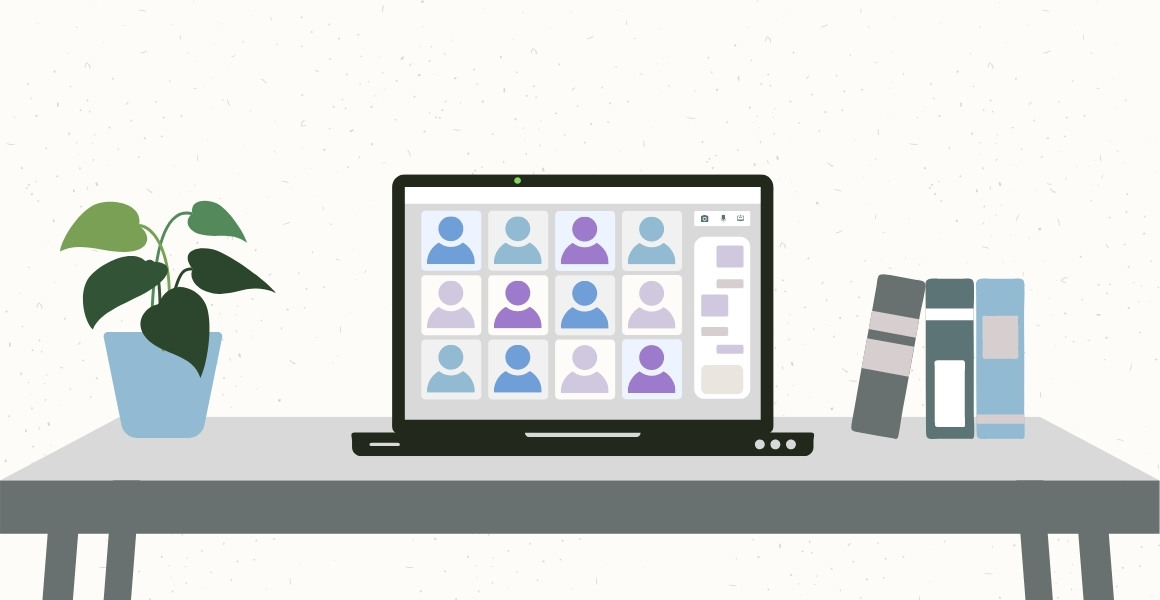I went back to school in September 2020 at the crest of a global pandemic, assuming I’d only be learning online for one term. Looking back now, I can’t believe how naïve I was. I’m now in my last term, and I’m still online.
We used to do this activity, but we can’t because we’re online.
I heard often last year as my instructors and classmates tried to make the most of online learning. Now, whenever I hear that phrase, I clench my teeth and shake my head.
Online classes were necessary when there wasn’t a vaccine and the world was still figuring out how to navigate COVID-19. Now that most of the population is vaccinated, it’s time to go back to campus. Online classes aren’t the future of post-secondary education.
Paying for this year’s tuition felt wrong. Days before school started, I got an email from the school telling me I needed to turn my dining room back into a classroom for another nine months. I was upset I had to pay for another year of school just to stare at a screen. At least my dog would be close by.
Once again, this year’s list of school fees included labs and materials I’ve never seen or used. Sure, I know how to perfectly balance my camera on the edge of my couch and record podcasts under a blanket to make it sound more professional, but I don’t really know if those skills will help me get a job.
According to Statistics Canada, Canadians pay an average of $5,000 to $8,000 per year for an undergraduate degree. The amount increases for medicine, dentistry, veterinary medicine, law, optometry, and pharmacy programs.
Even though students weren’t on campus, most universities required students to pay the same amount as in-person classes, but resources weren’t all adapted to online.
It is hard enough to manage post-secondary school, but because of the pandemic, it increased stressors that already existed among students, like financial security. Many students lost shifts or their job because of shutdowns. As a student, it is already difficult to pay for the cost of school. Minimum wage is so low, leaving little disposable income for most students to pay for rent, food, and transportation.
Online learning can also be extremely lonely, especially after two years. In my experience, students join online classes with cameras and microphones off until the instructor turns on their camera and all the icons magically become students. If your course requires cameras on, students and instructors are often staring blankly at each other. And that’s a best-case scenario. For classes that don’t require cameras on, students and instructors could be staring at a blank screen. Once the class is over, I’m alone again, staring at my clock, contemplating when I need to take my dog out for another walk. At school, students get to start the class with some chit-chat, and they usually don’t end class by waving goodbye to everyone.
Instructors have to adapt their course material so students can complete assignments at home. Unfortunately, this means there are in-person lessons students will never experience because they are limited to online learning. I can’t help but worry that I’m not getting the same quality of education as those who graduated before me because my education was online.
There isn’t much socializing while learning online because socializing in person is entirely different. Online, students are constantly staring face to face, but students wouldn’t be stared at that much in an in-person classroom. According to Jeremy Bailenson, a professor at Stanford University, Zoom is like an all-day mirror. Even when you minimize yourself, you can still stare at the little box with your face in it. The proximity to your computer and your classmates’ faces is unnatural and wouldn’t happen in person.
Sometimes doing a group project online is like looking into a two-way mirror because there are people who won’t turn on their cameras so you can’t see their face, but they can see your face. It can make students feel vulnerable and uncomfortable because they can’t see their classmates.
According to Zachary Patterson, a neuroscience professor at Carleton University, “The rapid pivot to online learning disrupted the educational routines of many post-secondary students, which poses a risk for their mental wellbeing. Universities continue to struggle with the rapid and timely dissemination of information relating to the availability of supports and services on campus.”
The increasing loneliness and isolation because of strict public health restrictions make online learning even harder.
According to Patterson, 54 per cent of the general Canadian population reported feeling lonely due to the physical distancing measures, compared to 69 per cent of young adults aged 18-24. Loneliness and social isolation are related to depression among young adults and make them more vulnerable to future depressive episodes.
There are many benefits to online learning, such as waking up five minutes before class, not packing a lunch or spending hours commuting to and from school. But missing out on opportunities to socialize and struggling with mental health are not sustainable consequences of online learning. The future of post-secondary education needs to be in person — students’ health and education depend on it.
